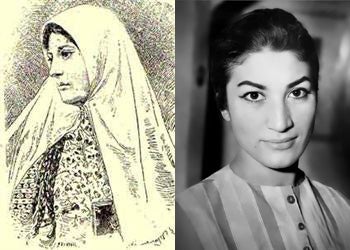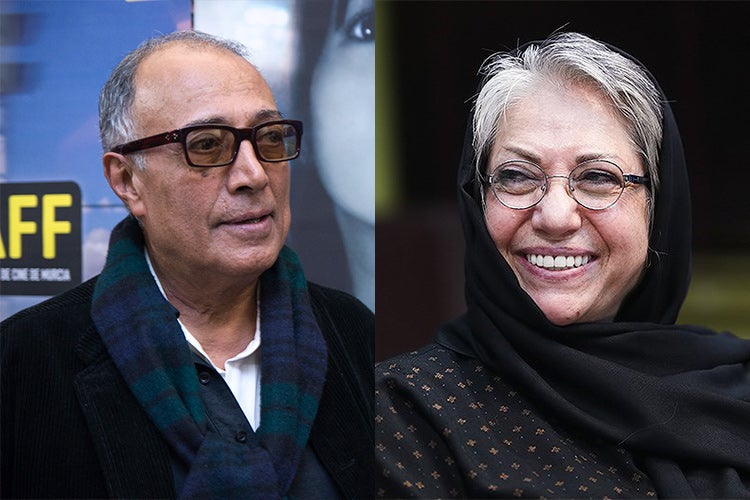U of T collaborates with Encyclopedia Iranica Foundation on study of Iranian women poets and cinema

Published: January 19, 2022
A hub for the study of Iranian history and culture, the University of Toronto has signed a multi-year partnership with the Encyclopedia Iranica Foundation to share a wealth of information on Iranian poets and Iranian film with the world.
First published as a fascicle in 1982, and online since 1996, the encyclopedia provides researchers and the general public alike with information on Iranian civilization written by 1,300 scholars. The agreement between the university and the Encyclopedia Iranica Foundation invites U of T researchers to contribute new research to digital compendia titled “Iranian Women Poets” and “Iranian Cinema.”
Mohamad Tavakoli-Targhi, the inaugural director of U of T’s Elahé Omidyar Mir-Djalali Institute of Iranian Studies and principal investigator on both projects, said U of T has emerged as a leading centre for the study of Iran over the last decade, including the creation of the institute last year.
“The new institute has over 20 faculty with twice as many graduate students, and there is a vibrant Iranian community in Toronto and Canada – all linked to sources of intellectual and artistic creativity. So it has been rather timely for the university to initiate a project like this,” said Tavakoli-Targhi, who is also a professor in the department of Near and MIddle Eastern civilizations in the Faculty of Arts & Science and in the department of historical studies at U of T Mississauga.
The research effort will involve scholars around the world, but the research and editorial team will be based in the department of Near and Middle Eastern civilizations. Research assistants will be jointly funded by the university and the Encyclopedia Iranica Foundation.
 Iran boasts a rich tradition of poetry by women writers such as Tahereh Qurrat al-’Ayn and Forough Farrokhzad (illustration: I, Stefan Back, Public domain, via Wikimedia Commons)
Iran boasts a rich tradition of poetry by women writers such as Tahereh Qurrat al-’Ayn and Forough Farrokhzad (illustration: I, Stefan Back, Public domain, via Wikimedia Commons)
The Iranian Women Poets project will shine a light on writers whose work has often been overshadowed by their male counterparts such as Rumi, Hafez and Omar Khayyam.
Tavakoli-Targhi notes that poetry remains an important part of everyday life in Iran. It's not unusual for Iranians to recite verses or turn to poetry for ethical guidance.
“Until recently,” he says, “the general academic understanding was that Iranian literature has been exclusively the domain of men. But because of work done in the past 40 years by literary scholars, it is now known that women have been writing poetry since as early as the 10th century.”
Significant female poets include Rabi‘ah Balkhi, a 10th-century poet; Mahasti Ganjavi (born circa 1089); Tahereh Qurrat al-‘Ayn, a 19th-century writer who was not only a poet but also a women’s rights activist and theologian; and Forough Farrokhzad, whose work has been revered by many since her life was cut short after a car crash in 1967.
The second digital compendium, Iranian Cinema, is related to the first in that both women and poetry have played key roles in the development of Iranian films.
“Iranian cinema has distinguished itself from the cinema of the rest of the world, because it is informed by poetry,” Tavakoli-Targhi said. “And some of my colleagues have argued that in the past several decades, cinema has replaced poetry as a form of Iranian self-expression. What is also interesting is that in Iranian cinema, women directors, producers, actors and so on are gaining more public attention. They’re following what one of my colleagues has called the ‘cinema of empathy’ – a kind of cinema where women are emerging as the universal subject, as someone the audience would want to be like. Because they are caring figures: attending to family, and also to their community and nation.”

Filmmakers Rakhshan Banietemad and Abbas Kiorastami have earned international acclaim (photos: Tasnim News Agency, CC BY 4.0, via Wikimedia Commons and Pedro J Pacheco, CC BY-SA 4.0, via Wikimedia Commons)
In recent years, filmmakers such as Rakhshan Banietemad and Abbas Kiorastami have become known to western audiences. But as Tavakoli-Targhi notes, the field has a long history. “In the early decades of the 20th century, Iran became a site for creative artists from Russia and Eastern Europe to come and do really good work. You saw them coming and creating, in the same way that European immigrants to the United States created Hollywood,” he says.
Tavakoli-Targhi is excited that the new resource projects will be truly international, with contributions not only from the many linguistic and cultural groups found within Iran, but also through the variety of researchers studying these topics abroad.
He is currently convening a Canadian Society for Iranian Studies, and has organized a regular Friday seminar series that has attracted close to 4,000 attendees. An event planned for Nowruz (Iranian New Year) in late March will also highlight female poets.
Tavakoli-Targhi celebrated the recent surge in cultural knowledge exchange that is fueling these new initiatives and may give rise to others.
“I often think of the COVID age as the simultaneity of spring and fall,” he said, “because you have the withering away of all these community networks that we used to have – but also the blooming of a new kind of connection.”



